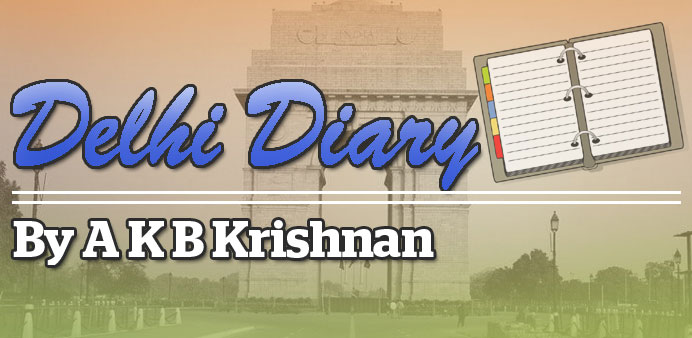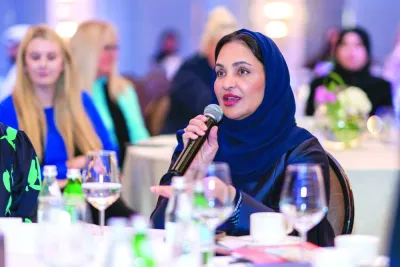Prime Minister Narendra Modi’s troubles are getting bigger and bigger as each day passes. The Lalit Modi controversy carries on unabated with more and more dirty details coming in the open encompassing more politicos from various parties, including one from the so-called purest of them all, the Aam Aadmi Party.
The timing of BJP veteran Lal Krishna Advani’s interview to the Indian Express newspaper ominously suggesting that the days of the Emergency could still come back and the party’s somewhat reluctant backing of Rajasthan Chief Minister Vasundhara Raje in the Lalit Modi incident pointed to the growing differences within the party. For the first time in more than a year, it seemed Narendra Modi’s grip over the party is getting shaken.
But there is more trouble brewing for Modi with two of his most senior ministers, Rajnath Singh and Arun Jaitley, set on a collision course on a matter that could once again remind Indians of the Emergency.
Sun TV is by far south India’s largest television network. With 33 TV channels in four languages and as many as 45 FM radio stations, the Kalanidhi Maran-promoted Chennai-based network has seen unprecedented growth over the past two decades. But Maran and his younger brother Dayanidhi, who was telecom minister in the previous Congress government, have been under a cloud for some time for various economic offences. If the allegations are true, the total worth of financial frauds, which include money laundering, illegal gratification and running an illegal telephone exchange from within the premises of Sun TV offices, committed by the Marans is close to $150mn.
All these allegations are now under investigation by the Central Bureau Investigation. Once the CBI completes its job, the courts will examine the findings and pronounce a verdict. But that is quite a distance away. Until such time the Marans will have to be treated only as suspects and not guilty.
The media, whether electronic or print, in India is overseen by the information and broadcasting (I&B) ministry. However, all media organisations and accredited journalists have to first obtain security clearance from the ministry of home affairs (MHA). For the channels this clearance, once given, is valid for ten years. Without this MHA clearance, the I&B ministry will not provide satellite uplinking/transmission facilities.
While the I&B ministry, headed by Jaitley, is of the view that Sun TV should be allowed this facility, the MHA, headed by Rajnath Singh, says the Marans are a threat to national security and, therefore, clearance should be denied. Earlier this month Jaitley wrote to Singh citing a Madras High Court verdict of March 2015 favouring the Marans in the matter of security clearance for the FM stations. It will be an embarrassment for the government if Sun TV were to obtain a similar verdict from the court after the government had denied the clearance, Jaitley wrote to Singh.
India’s Attorney-General Mukul Rohatgi, whose advice is the basis on which the government decides how to proceed in matters of law, has also written to the MHA that he could find no reason for denying the clearance to Sun TV. All this, however, has not moved Singh who is steadfast in his decision to deny clearance to Sun TV.
How a television channel broadcasting news and entertainment programmes could be a threat to national security is beyond comprehension. Even the argument that the Marans are a threat to the “financial security” of the nation also does not carry much water. But apparently there is more than mere national security involved in the case of Sun TV. It’s politics, and perhaps of the worst kind since national security is being used as a façade to gain political leverage.
The Marans are the sons of late Murasoli Maran who was a nephew of DMK chief Muthuvel Karunanidhi. It is a given that Sun TV has always promoted the DMK point of view against arch rival and Chief Minister J Jayalalithaa of AIADMK whose Jaya TV takes care of her part of the political campaign.
With the AIADMK enjoying sizeable numbers in both the Lok Sabha (at 37 the third biggest after the BJP and the Congress) and the Rajya Sabha (11), it’s crucial for the Modi government to keep Jayalalithaa on its side. And one way to do that is to spite her enemy No1 DMK any which way possible.
But the ramifications of such a drastic step - and here’s where shades of the Emergency come in as Indira Gandhi’s first draconian move in 1975 was to muzzle the press - may get out of hand and can hurt Modi more than it can help him. Jaitley perhaps has seen it coming. But Singh seems to see it differently. If things come to such a pass, the ultimate loser will be the BJP.
Airlines indulging in kite-flying
“Kite-flying, or to fly a kite, is a term used in politics in certain English-speaking countries to describe a tactic, whereby a politician, usually through the media and often by way of an intentional leak, raises an idea to gauge the general and public reaction to it. Depending on the reaction, the idea that is positively received may be implemented, or disowned and denied if unfavourable, unsympathetic or hostile.”
Though somewhat longwinded, Wikipedia’s explanation of “kite-flying” is quite informative and interesting. Perhaps the one point that the online information giant failed to mention is this particular illusory exercise is practised not just by politicians alone but by sundry organisations, including major corporates and cartels.
Airlines don’t much appreciate kites or kite-flying of the real variety because they interfere with the navigation of planes but they love its metaphorical version. One such example of kite-flying was in evidence in India last week when reports emerged that three private ‘budget’ airlines, led by IndiGo, had approached the Director-General of Civil Aviation (DGCA) for permission to sell air tickets at lower rates to passengers who do not have checked-in baggage. But before DGCA could take a call on the request, junior minister for civil aviation Mahesh Sharma shot it down after the media and passenger organisations raised much noise over it.
On the face of it, the proposal is a very customer-friendly one. After all, who wouldn’t want to save on air tickets? Not many people who fly domestically have baggage to check-in and even if they do, quite a number of them do so to avoid the hassle of lugging their stuff around airport lounges and then into and out of aircraft cabins. If airline companies can genuinely cut ticket prices for those without checked-in baggage, the number of those with cabin baggage only will increase significantly as they try to squeeze in that extra pair of trousers/dress into the limited capacity overnighter. Many budget airlines in other countries - Air Asia of Malaysia and Ryan Air of Ireland are just two examples - have similar programmes, the advantage being not only that planes can lift off lighter, thereby saving precious fuel, but also that fewer hands need be employed to handle baggage and aircraft turn-around times can be reduced substantially.
But in India things work a little differently. It has happened earlier in the airline business itself, so it is easy to illustrate. In June 2013, the budget carriers reduced baggage allowance for domestic flights from 20kg to 15kg under the pretext that they would be able to offer cheaper fares. DGCA and the ministry swallowed the explanation hook, line and sinker. Whether they swallowed it willingly or sweeteners were provided is anybody’s guess, but reality was something different.
Fares never went down. In fact, the so-called budget airlines often sell tickets at prices higher than ‘full-service’ airlines like Air India, Jet or Vistara. At the time of writing, a Delhi-Mumbai ticket for July 1, 2015 was priced at Rs3,621 on ‘full service’ Air India while the same ticket cost Rs3,844 on ‘budget’ IndiGo. Budget airlines explain this away as dynamic pricing. And passengers also end up paying more if their baggage weighs more than 15kg. Presently the situation is such that all except Air India has made 15kg baggage as the norm.
The latest proposal by these budget airlines could well be another attempt to squeeze a few more rupees out of passengers. Because, soon the norm would be baggage-less travel at prices similar to the one existing presently with the baggage allowance. So every time you have anything to check in, you would end up paying regardless of how much it weighs.
Whether minister Sharma saw through this and therefore rejected the proposal one cannot be sure of because all he said was that it is not under consideration “for now”, which means it can come up at a later date. These private airlines were indeed indulging in kite-flying but with less than hoped-for results. But it is safe to assume that we have not heard the last of this baggage trick by India’s airlines.



